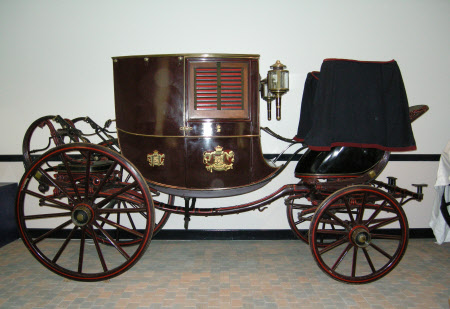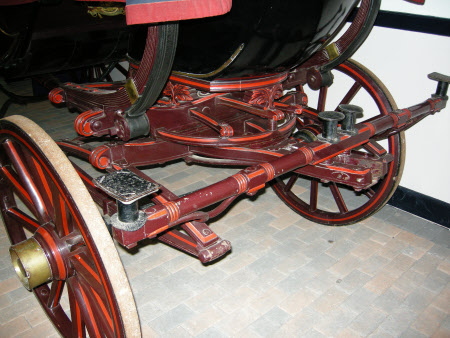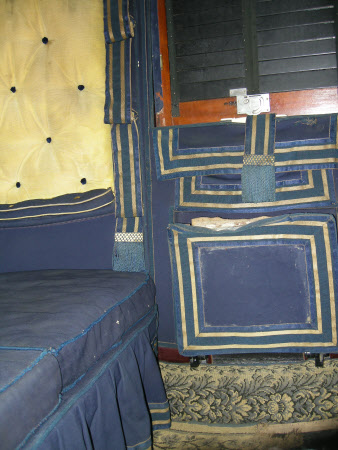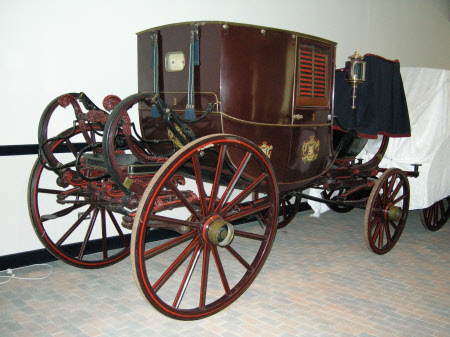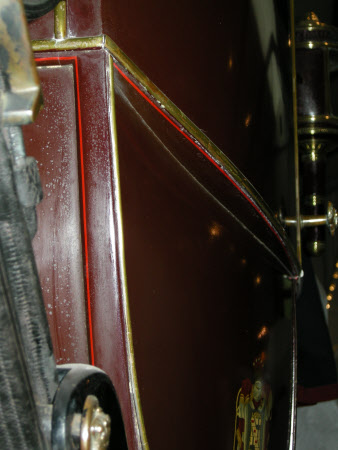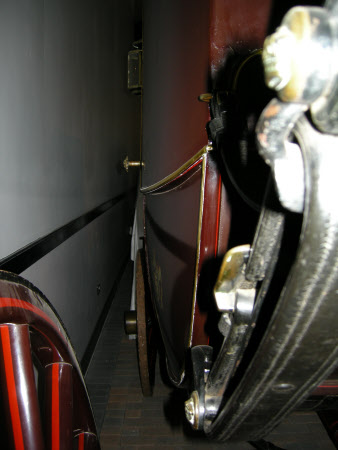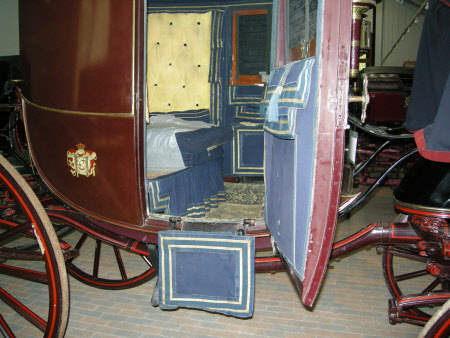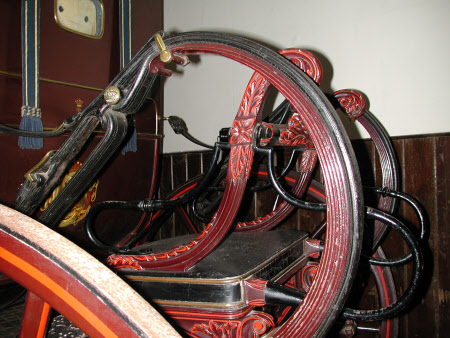State chariot
Hooper and Co.
Category
Carriages & other vehicles
Date
1830 - 1846
Materials
Painted body with silk and wool upholstery and four iron shod wheels.
Measurements
231 x 420 x 191cm (7ft 7in x 13ft 9 1/3in x 6ft 3 1/4in)
Place of origin
London
Order this imageCollection
National Trust Carriage Museum
NT 272890.1
Caption
This fine carriage was built for the Earl of Onslow of Clandon Park, Surrey. It is called a chariot because of the shape of the body. A chariot only seats two on a seat behind the doors. Image was everything so the coachman and footmen had to be well turned out. The coachman, in full livery, would wear a powdered wig, tri-corn hat, braided livery coat, white plush breeches, white silk stockings and silver-buckled shoes. The footmen, similarly dressed, wore bicorn or cocked hats. They carried silver-topped staves, known as wands, which were earlier used to keep the crowds away from the carriage.
Summary
State Chariot built between 1830 and 1846 by Adams & Hooper of London for the Earl of Onslow. State Chariot (four wheels) for a team of four horses. This carriage has a centre pole and is sprung on C and under springs. The exterior has a brass trim, a forward Salisbury boot, an under boot, a footman's cushion and two candle lamps. The interior trim is in gold and blue with two cushions. Painted in maroon livery with red lining and with the Onslow coat of arms on side panels, rear and front 'Festina Lente' - 'Hasten with Caution'.
Full description
A Typical 19th century state chariot by premier builder, Adams and Hooper of London. This fine carriage was built for the Earl of Onslow of Clandon Park, Surrey (now a National Trust property), by Adams & Hooper of London who were in business together between 1830 to 1846, so we know it was built between these dates. It was used only on state occasions and was driven by a coachman in full livery with powdered wig, tricorn hat, braided livery coat, white plush breeches, white silk stockings and silver-buckled shoes. Two footmen, similarly dressed, except that they wore bicorn or cocked hats, stood on the “footmen’s cushion”, the padded platform behind the body, steadying themselves with the “footmen’s holders”. They carried silver-topped staves, known as wands, which were earlier used to keep the crowds away from the carriage. They were expected to stand motionless and bolt upright. Unfortunately the hammer cloth is missing, so this chariot is displayed with a hammer cloth cover.
Marks and inscriptions
On the side panels. : Onslow Coat of Arms 'Festina Lente' - 'Hasten with Caution' On the rear panel.: Onslow Coat of Arms 'Festina Lente' - 'Hasten with Caution' On the front panel.: Onslow Coat of Arms 'Festina Lente' - 'Hasten with Caution' Axle component on near fore wheel: “CHARLES COLLINGE No 64 BRIDGE ROAD LAMBETH” Engraved on Venetian blinds.: “ADAMS & HOOPER LONDON” On front nearside axle components.: L On front offside axle components.: L On rear nearside axle components.: L On rear offside axle components.: L On front nearside axle caps.: * HOOPER & CO* LONDON On front offside axle caps.: * HOOPER & CO* LONDON On rear offside axle caps.: * HOOPER & CO* LONDON On rear nearside axle caps.: * HOOPER & CO* LONDON
Makers and roles
Hooper and Co., coach builder
